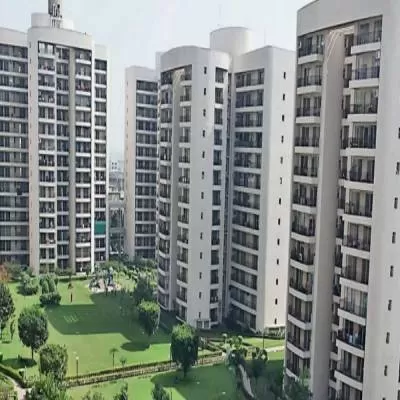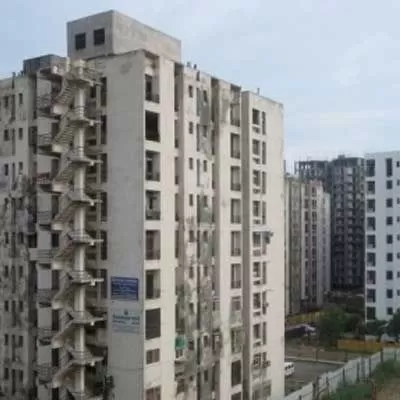- Home
- Real Estate
- Look out for the one bright spot in housing real estate, the impact of RERA and more

Look out for the one bright spot in housing real estate, the impact of RERA and more
Housing real estate is down. Sales fell by 35 per cent across eight major cities between July and September as against the previous quarter, according to research firm PropEquity. These eight cities are Gurgaon, Noida, Mumbai, Kolkata, Pune, Hyderabad, Bengaluru and Chennai. <p></p> <p>To add to that, housing demand is not expected to surge in the near future, predicts <span style="font-weight: bold;">Amit Oberoi, National Director, Knowledge Systems, Colliers International India. </span></p> <p>Supply has also slumped as has new launch activity. Among those eight major cities, Noida (76 per cent) witnessed the highest dip in new launches followed by Bengaluru (70 per cent) and Pune (66 per cent), as per PropEquity.</p> <p>In Oberoi's view, falling demand and the introduction of the Real-Estate Regulation Act (RERA) have adversely impacted new launches in many cities.</p> <p>Amid the gloom, however, one big opportunity shines through: Affordable housing.</p> <p> <span style="font-weight: bold;">Affordable housing: Powering forward</span><br /> Affordable housing is being considered as the next big market in the residential realty market, to quote JC Sharma, Vice Chairman and Managing Director, Sobha. What makes this segment attractive to developers is that demand for affordable units is steadily growing across India. </p> <p>Plus, 'the government has granted affordable housing infrastructure status and brought out schemes like the Credit Link Saving Scheme (CLSS) under the Pradhan Mantri Awaas Yojna (PMAY),' says <span style="font-weight: bold;">RK Arora, Chairman, Supertech</span>. 'Industry sources say affordable housing loans are expected to grow by 25 per cent.'</p> <p>'We have seen good traction in demand for finance for affordable housing across the country,' agrees Rajesh Krishnan, Founder & CEO, Brick Eagle.</p> <p>While affordable housing is seeing continuous growth across all cities, Anuj Puri, Chairman, Anarock Property Consultants, believes the segment is strongest in Bengaluru, MMR, NCR, and Pune, each of which account for 16-19 per cent share of this price bucket.</p> <p>Going forward, all major cities and their periphery locations present ample long-term opportunities for the development of affordable housing, reasons <span style="font-weight: bold;">AS Sivaramakrishnan, Head of Residential Services-India, CBRE South Asia. </span>Consequently, even developers who were traditionally in the luxury segment are now looking to capture the affordable housing market, observes Sharma.</p> <p>Already, affordable housing units are flooding the market. According to Puri, units in the affordable bracket (average ticket price less than Rs 40 lakh) have constituted more than half (52 per cent) of the overall new supply in 2017 so far.</p> <p>To cater to the huge potential in the affordable housing segment in the Delhi-NCR market, Supertech plans to come up with 40,000 affordable homes. 'Demand in the ready-to-move-in and affordable segment has shown an upward trend in the past six months,' says Arora.</p> <p> However, for the affordable housing segment to really see traction in the long run, Sivaramakrishnan believes the government needs to focus on enhancing social infrastructure development and connectivity in the new (emerging) pockets.</p> <p> <span style="font-weight: bold;">The PPP model</span><br /> To sustain consumer demand for housing in the long run, <span style="font-weight: bold;">Tarun Mehrotra, Head-Marketing and Sales, Tata Housing</span>, believes there is a need for a dedicated public-private partnership (PPP) model.</p> <p>In September 2017, the Central Government came out with eight PPP models to promote the construction of affordable homes, mainly for buyers from the economically weaker sections (EWS) and low income group (LIG) segments. Private investments in affordable housing will be essential for the government to achieve its Housing for All target by 2022.</p> <p>Six of the proposed models involve the construction of affordable homes by private developers on government land offered on a long-term (30-99 years), nominally priced lease. Two models involve development on private land with the government providing incentives such as central assistance of Rs 1.5 lakh per unit for EWS housing, stamp duty exemptions, higher FAR/FSI/TDR, single-window clearance, etc.</p> <p> <span style="font-weight: bold;">What will it take for these models to find takers?</span><br /> While the Central Government has provided the basic framework for eight PPP models, Krishnan points out that each state government will be required to formulate the fine print for implementing the models in its state. He lists the following as key determinants of the eventual success of these models: The release of government land, identifying target buyers, tying up necessary finances, selecting developers through a fair and transparent process and sufficiently incentivising developers. 'Essentially, the developer must be convinced of making adequate returns, the ease of getting various land and development approvals and the promptness of payouts by the respective authorities,' explains Krishnan.</p> <p>Overall, he believes the PPP models involving government land could generate significant interest from developers in metros and other large cities where affordability is a pressing issue, whereas models involving private land should find takers in fringe areas of urban centres. 'States must apply the specific models depending on the city and project location,' he recommends.</p> <p> <span style="font-weight: bold;">Emerging bright spots in key markets</span><br /> In general, larger cities will see more demand for housing owing to their larger base and faster population growth from higher economic migration, observes Oberoi. Within cities, infra developments and commercial property trends are likely to dictate housing demand trends. Sivaramakrishnan envisages that as city infrastructure initiatives such as new highways and metro rail transport services are completed, occupier movement in nearby areas will trigger the emergence and strengthening of those pockets.</p> <p>In IT industry-led cities such as Bengaluru, Hyderabad and Pune, Oberoi observes that historically low vacancy rates in office real estate have significantly increased rental values in some micro-markets. </p> <p>This, in turn, is giving a boost to new micro-markets, especially for cost-conscious, large-sized offices. In time, residential property demand may follow office demand in these newer micro-markets.</p> <p>In Sobha's primary market Bengaluru, Sharma expects office space absorption to drive housing, especially in these micro markets: Whitefield, Hoskote, Sarjapur Road, Outer Ring Road, Kanakapura Road, Yelahanka, Hennur, Horamavu, Kengeri, Hosur Road, Thanisandra, and Balagere, where Sobha is developing its first compact luxury housing project, Sobha Dream Acres.</p> <p>Some pockets to watch out for in key markets, as per Puri, are South Gurugram led by Sohna; Hinjewadi and surrounding vicinities in Pune; areas beyond Thane region and Airoli in Mumbai; the Ulwe and Nerul pockets in Navi Mumbai; Hennur Road, Sarjapur Road, Thanisandra Road, Yelahanka and Tumkur Road in Bengaluru; Sholinganallur and Siruseri in Chennai; and Kokapet and Manikonda in Hyderabad.</p> <p>To further push housing demand in key cities, Puri proposes the joint development of physical and social infrastructure. This would mean interspersing housing with employment centres such as IT-SEZs, IT parks, business parks, and in peripheral and suburban areas where land and other resources are available. Creating townships with mixed developments and pushing manufacturing units towards peripheral and suburban areas would also help.</p> <p>'Sustained growth of residential real estate depends on the successful creation of infrastructure in the earmarked regions,' agrees Mehrotra. </p> <p>Beyond Tier-I cities Among towns, Oberoi sees demand growing in places with unmet demand for affordable housing and in places witnessing economic growth. That said, there is a trend among buyers and investors to invest in Tier-II and Tier-III and suburban cities, which Puri says is being driven by rocketing property prices, land saturation and subdued demand in Tier-I cities, their proximity and better connectivity to metros, and initiatives such as smart cities, Atal Mission for Rejuvenation and Urban Transformation (AMRUT) and Swachh Bharat.</p> <p>Investment in Tier-II and Tier-III cities is up roughly 17 per cent this year (till August) compared to last year, Puri reckons. Jaipur, Chandigarh, Amritsar, Sohna, Lucknow, Nagpur, Surat, Vadodara, Visakhapatnam, etc, are witnessing considerable real-estate action.</p> <p> <span style="font-weight: bold;">RERA: Impact on demand</span><br /> RERA was widely expected to boost buyer confidence, and thus boost housing demand. But the fact is that economic growth and opportunities boost housing demand, says Oberoi. 'It isn't as if RERA can generate demand in itself; but by creating a more accountable and transparent environment, policies like RERA can facilitate or act as a catalyst to spur housing demand.'</p> <p>Essentially, where RERA is in place, developers will try to stick to declared project timelines and the property features declared in marketing collaterals because buyers have a means to avail regular project updates as well as a legal route to hold developers accountable for promises made, says <span style="font-weight: bold;">Ganesh Vasudevan, CEO, IndiaProperty.com.</span> 'With RERA in place, developers will also become more quality conscious as they become liable for construction defects occurring within five years from handing over the property.' While RERA is likely to be a game-changer in protecting buyer's interest, its real impact and effectiveness will depend on implementation on the ground. Consider this: By the end of July 2017, every state should have implemented RERA. However, despite notifying the rule, states such as Haryana, Andhra Pradesh, Jharkhand, Chhattisgarh, Telangana and Odisha still did not have a live RERA website till end-October 2017, notes Puri.</p> <p>According to him, going slow on RERA is severely affecting new launches and causing buyers to defer buying decisions or opt for ready-to-move-in projects. Delays in registering complaints and creating a redress mechanism are creating apprehension among buyers. And, in some states, buyer confidence has been hurt by the inclusion of clauses on under-construction, the liability of the promoter with regards to structure standards, the extent of liability in the case of faulty titles, imprisonment on failure to deliver on promises, how saleable area is defined, etc.</p> <p>For its part, Maharashtra has sped ahead with RERA. It had registered over 13,000 projects till October 2017, as per Puri; additionally, the state RERA authority has started resolving buyer complaints registered against developers, which is increasing buyer confidence in the system.</p> <p> The Maharashtra RERA website is setting a benchmark in the level of disclosure and proactivity of the regulator for other states to follow, says Oberoi. </p> <p> <span style="font-weight: bold;">RERA: Impact on developers</span><br /> Developers with transparent policies and practices have seamlessly migrated to a post-RERA and GST regime, and will take any short-term transition challenges in their stride, says Sharma. 'Our projects were registered well within the specified timelines, without any impact on sales or pricing.'</p> <p>When states eventually get their act together on RERA, Sharma expects it will propel ease of doing business and create a level-playing field for organised players like Sobha, with a strong balance sheet, transparent dealings and a great track record of timely delivery: 'Eventually, non-serious players will either transition themselves to remain relevant or lose out by not embracing such changes.'</p> <p>Mehrotra expects to see consolidation in the sector, which he says presents an opportunity for large and organised players like Tata Housing to expand their portfolio.</p> <p> <span style="font-weight: bold;">Pooling policy</span><br /> With Delhi simplifying norms for the pooled development of 22,000 hectare, land pooling has come under the scanner as an effective policy to meet the housing shortage in key markets.</p> <p>'Land pooling is a win-win policy in the face of land scarcity in all the major cities,' says Puri. 'It could help meet the Housing for All by 2022 target.'</p> <p>Delhi alone is expected to need 24 lakh new dwelling units by 2021 for a projected population of 2.3 crore. So far, the Delhi Development Authority (DDA) has built 11.69 lakh residential units in the city.</p> <p>The new simplified policy gives landowners the option to give their land to DDA for the development of roads, water facilities, power lines, sewage channels, schools and hospitals. Thereafter, the developed land will be returned to the owners who can then build apartments on it in partnership with developers.</p> <p>Other states and cities that have adopted land pooling include Andhra Pradesh for the development of Amravati, the new capital; Haryana; the Indore Development Authority (Madhya Pradesh); and Guwahati (Assam), observes Puri.</p> <p>'Haryana has recently introduced a draft land pooling policy with the aim to balance infrastructure growth with real-estate expansion in the areas identified for land acquisition,' notes Sivaramakrishnan.</p> <p> <span style="font-weight: bold;">Good tidings</span><br /> Housing may be down but it is surely not out. 'The stutter in the real-estate sector is only for the short-term period,' observes Arora.</p> <p>Puri estimates that it will take another 12 to 18 months for key markets to imbibe the impact of recent changes and resume the upward movement seen prior to 2011.</p> <p>Meanwhile, most leading banks and financial institutions have reduced interest rates across various home loan segments, which is helpful, says Mehrotra.</p> <p>Interest subvention of 4 per cent for home loans up to Rs 9 lakh and 3 per cent for home loans up to Rs 12 lakh, and increased loan tenure from 15 to 20 years will help reduce the cost of borrowing for end-users,' says Sivaramakrishnan.</p> <p>With these pushes, the leaders continue to see good traction while the rest can hope to catch up when the tide turns.</p> <p>We have received a phenomenal response from consumers across housing segments (affordable to luxury) between April and September, with 30 per cent quarter-on-quarter growth,' says Mehrotra. 'With end-user enquiries constantly rising, we expect the numbers to get better.'</p> <p> <span style="font-weight: bold;">Housing for All: Success Factors</span><br /> It needs to be noted that land is a state subject and housing is essentially a city government function. Keeping the above in view, <span style="font-weight: bold;">Hardeep S Puri, Union Minister of State (I/C), Ministry of Housing and Urban Affairs, GoI,</span> shares some key achievements of the mission, so far:<br /> </p> <ul> <li>Enthusiastic participation from all states and UTs. </li> <li> In 10 years of the previous housing scheme from 2004 to 2014, around 10 lakh houses had been sanctioned. In two-and-a-half years of PMAY (U), 30.76 lakh houses have already been sanctioned.</li> <li>Unlike the earlier scheme, where projects were appraised and approved by the Central Government, under PMAY (U), appraisal and approval are delegated to states and UTs. They need to come to the Central Government only for release of central assistance. This is one of the philosophies of the present in play: Cooperative federalism.</li> <li>Fund flow from the ministry to the states is electronically done through the public financial management system as mandated by the government. This ensures disbursement of money. </li></ul> <p>Continued on page...130<br /> <span style="font-weight: bold;"> </span></p> <p><span style="font-weight: bold;">- CHARU BAHRI</span></p>




















